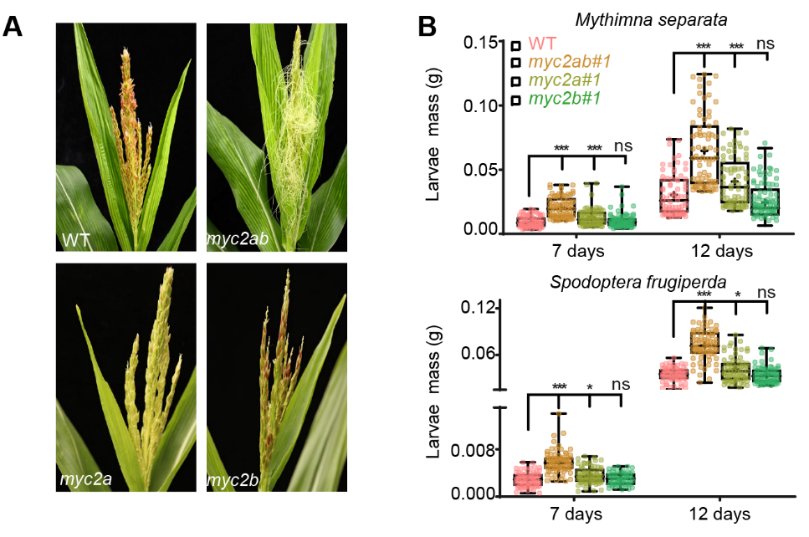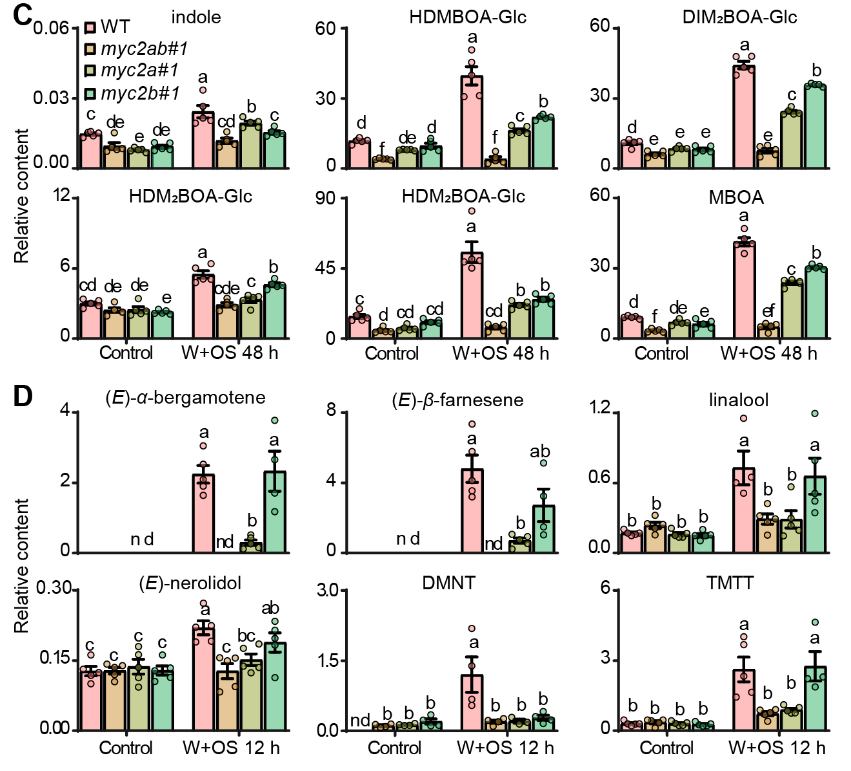Maize (Zea mays) is an important food, feed, and bioenergy crop, and plays a pivotal strategic role in food security, while insect pests seriously affect the yield and quality of maize.
BXDs (benzoxazinoids) and volatile terpenes are insect-resistant defensive compounds in maize. BXDs are toxic to insects and they directly inhibit insect growth and development, and volatile terpenes attract the natural enemies of herbivorous insects.
Previous studies have shown that jasmonic acid (JA) treatment can promote the accumulation of BXDs and volatile terpenes in maize, but the underlying molecular mechanisms were unknown.
Recently, the team led by Prof. WU Jianqiang at the Kunming Institute of Botany, Chinese Academy of Sciences (KIB/CAS), elucidated the functions of maize MYC2s in JA-mediated insect defense response by means of genetics, biochemistry, molecular biology, and bioinformatics.
The results showed that compared with the wild-type maize plants, the maize mutants, in which MYC2s were knocked out, were highly susceptible to the insects Mythimna separata and Spodoptera frugiperda.
The maize MYC2s mutants also showed a feminized tassel phenotype. Thus, MYC2s regulate maize insect resistance and sex determination of tassels. The team further demonstrated that maize MYC2s positively regulate the biosynthesis of BXDs and volatile terpenes, and the RNA-Seq and CUT&Tag-Seq analyses also revealed the regulatory landscape of maize MYC2s.
The team identified seven transcription factors (TFs) that are physically targeted by MYC2s and they are likely involved in regulating the biosynthesis of BXDs. This study provides important new insight into the molecular mechanisms of insect resistance and JA signaling in maize.
The study was published online in the Journal of Integrative Plant Biology under the title ZmMYC2s play important roles in maize responses to simulated herbivory and jasmonate.
This study was supported by the Strategic Priority Research Program and the Center of Excellence in Biological Interactions of Chinese Academy of Sciences, the National Natural Science Foundation of China, and the Yunnan Provincial Innovation Team Program.


W+OS: simulated herbivory, ns: no significance, nd: no detection, myc2ab: ZmMYC2s mutants, myc2a: ZmMYC2a mutants, myc2b: ZmMYC2b mutants (Image by KIB)
(Editor: YANG Mei)




